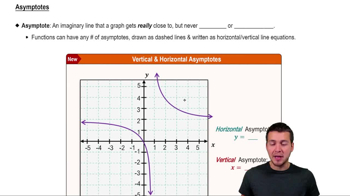Multiple Choice
Given a right triangle where one leg has length units and the other leg has length units, what is the length of the hypotenuse? Round your answer to the nearest hundredth.
17
views

 Verified step by step guidance
Verified step by step guidance Verified video answer for a similar problem:
Verified video answer for a similar problem:



 4:18m
4:18mMaster Finding Missing Side Lengths with a bite sized video explanation from Patrick
Start learning